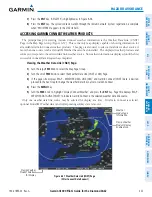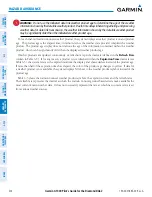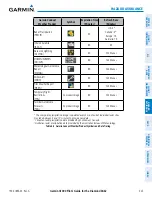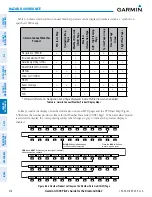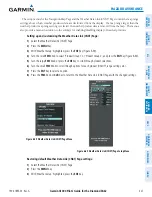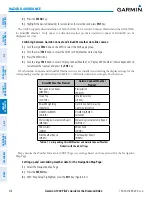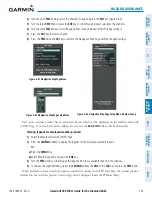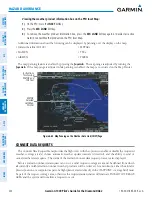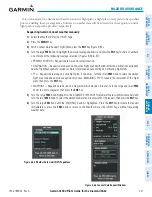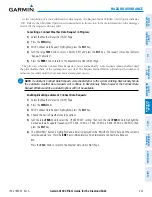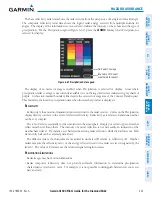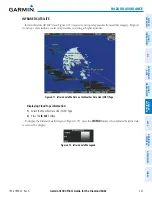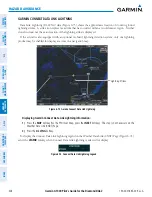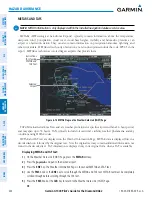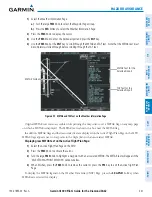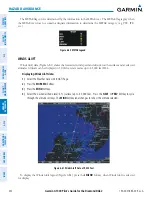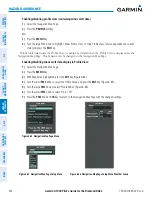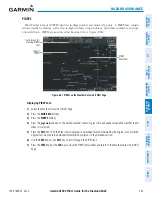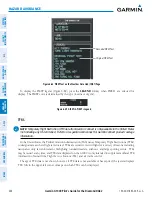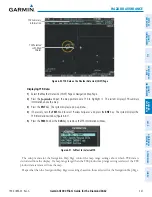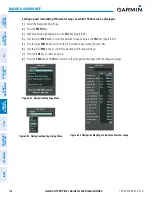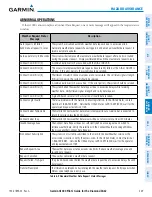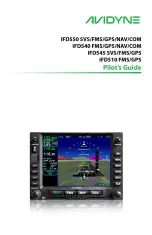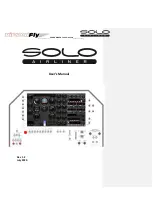
190-01895-00 Rev. A
Garmin G1000 Pilot’s Guide for the Diamond DA62
335
HAZARD AVOIDANCE
SY
STEM
O
VER
VIEW
FLIGHT
INSTRUMENTS
EIS
AUDIO P
ANEL
& CNS
FLIGHT
MANA
GEMENT
HAZARD
AV
OID
ANCE
AFCS
ADDITIONAL
FEA
TURES
APPENDICES
INDEX
The base reflectivity radar data shows the radar returns from the perspective of a single antenna tilt angle.
The composite reflectivity radar data shows the
highest
radar energy received from multiple antenna tilt
angles. The display of the information is color-coded to indicate the intensity of the echoes and the type of
precipitation. For the Precipitation legend (Figure 6-69), press the
LEGEND
Softkey when Precipitation is
selected for display.
No Radar Coverage
Figure 6-69 Precipitation Data Legend
Boundary of Connext
weather data request
The display of no radar coverage is enabled when Precipitation is selected for display. Areas where
precipitation radar coverage is not currently available or is not being collected are indicated in gray shade of
purple. A white tick-marked boundary line depicts the selected coverage area of the Connext Data Request.
This boundary encloses the precipitation data when this weather product is displayed.
R
eflectivity
Reflectivity is the amount of transmitted power returned to the radar receiver. Colors on the Precipitation
display directly correlate to the level of detected reflectivity. Reflectivity as it relates to hazardous weather
can be very complex.
The role of radar is essentially to detect moisture in the atmosphere. Simply put, certain types of weather
reflect radar better than others. The intensity of a radar reflection is not necessarily an indication of the
weather hazard level. For instance, wet hail returns a strong radar reflection, while dry hail does not. Both
wet and dry hail can be extremely hazardous.
The different radar echo intensities are measured in decibels (dB) relative to reflectivity (Z). Weather
radars measure the reflectivity ratio, or the energy reflected
back to
the radar receiver (designated by the
letter Z). The value of Z increases as the returned signal strength increases.
P
ReciPitation
l
imitations
Radar images may have certain limitations:
• Radar composite reflectivity does not provide sufficient information to determine precipitation
characteristics (wet hail vs. rain). For example, it is not possible to distinguish between wet snow, wet
hail, and rain.
Содержание G1000 Diamond DA62
Страница 2: ......
Страница 14: ...Garmin G1000 Pilot s Guide for the Diamond DA62 190 01895 00 Rev A x TABLE OF CONTENTS Blank Page...
Страница 629: ......



